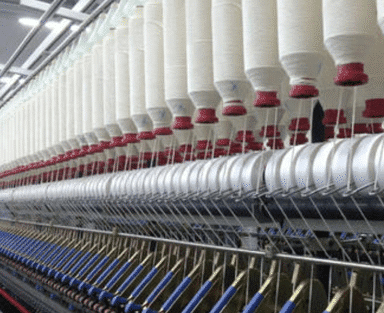Applications of Cooling Equipment Units in the Textile Industry
In the textile industry, cooling equipment units are vital for sustaining production efficiency and product quality. During processes such as high-speed spinning, weaving, dyeing, and heat-setting, industrial machinery and chemical treatments generate intense heat. Excessive temperatures can deform fibers, destabilize synthetic material properties, or cause uneven dye absorption, leading to defects in fabrics. Cooling equipment units maintain precise thermal control by circulating chilled water or air-cooling systems, ensuring stable operation of looms, rollers, and dyeing vats. This regulation prevents overheating-related mechanical failures, minimizes material waste, and preserves the integrity of temperature-sensitive synthetic fibers. Additionally, consistent cooling enhances energy utilization in steam systems and extends the service life of critical equipment in continuous production environments.
Key Application Scenarios:
- Melt Cooling in Synthetic Fiber Production: In synthetic fiber production (e.g., polyester, nylon), high-temperature molten materials require rapid cooling to form uniform fibers. Cooling equipment units (e.g., screw chillers) use circulating chilled water to precisely control cooling rates, preventing uneven crystallization or fiber breakage, thereby enhancing product strength and gloss.
- Temperature Control in Dyeing and Finishing: Dyeing machines and heat-setting equipment require stable water temperature control (e.g., within ±1°C) to ensure uniform dye penetration and color fastness. Cooling units rapidly absorb excess heat generated during dyeing, preventing fabric color deviation or shrinkage caused by temperature fluctuations.
- Workshop Cooling and Humidity Regulation: High-temperature and high-humidity environments in textile workshops can lead to yarn breakage and equipment malfunction. Cooling units integrated with HVAC systems reduce workshop temperatures (typically to 25-28°C) and regulate humidity to 50-60%, ensuring stability in spinning and weaving processes.
- Cooling for Textile Machinery Lubrication Systems: Lubricants in high-speed textile machinery (e.g., spinning frames, rapier looms) may degrade due to friction-induced heat. Cooling units maintain oil temperatures below 40°C through chilled water circulation, extending lubricant life and reducing mechanical wear.
- Waste Heat Recovery for Energy Efficiency: Waste heat from dyeing and drying processes can be converted into preheating energy by heat recovery cooling systems, used for heating cleaning water or workshop spaces, reducing overall energy consumption by 20-30% and aligning with sustainable production goals.
Key Advantages
- Precise Temperature Control: Achieves ±1°C accuracy in dyeing processes for consistent color quality.
- High Energy Efficiency: Inverter technology and heat recovery systems reduce energy use, with some models saving over 25%.
- Corrosion Resistance: Stainless steel or titanium heat exchangers withstand humid and chemical-heavy workshop conditions.




